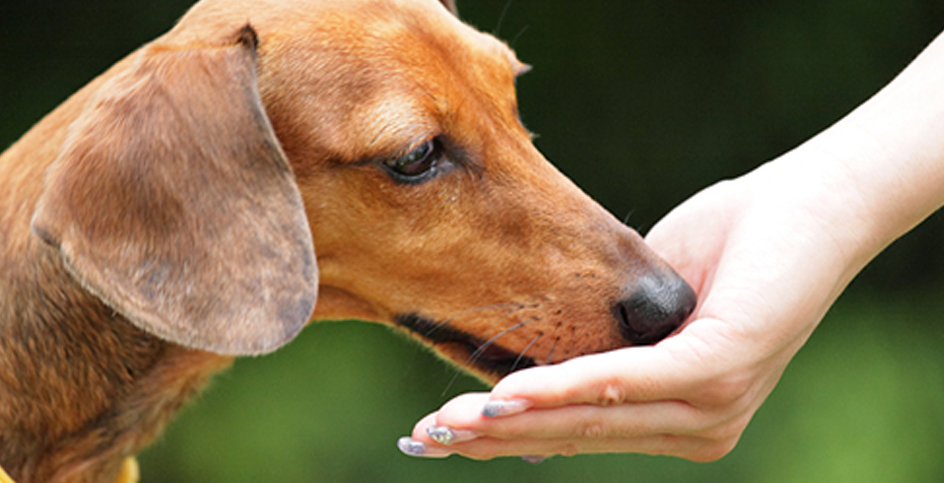- Learn
Rewards, the key to teaching new behaviours

Pet owners often face the challenge of teaching new behaviours, sometimes out of necessity or others just for having a good time. The problem is how to do it. For instance, ¿how can we teach our pet to sit down, lie down, take a step back or get into the car? You only need to know the available techniques, choose the one that fits you and get on with it with a clear training plan, a great deal of patience and many rewards.
One of the most expedient techniques among owners is the lure/reward training technique, which consists of using a piece of food or a toy to draw the animal and guide its moves until you get the desired effect. Most owners use the lure/reward technique to teach their dogs to sit down, lie down or get in the car. For instance, in order to teach your dog to sit down, you just have to put a piece of food in front of its snout and then raise your hand over its head. As it won't lose sight of the food, your dog will raise its head, lower its body and will eventually sit down. When your dog sits down or performs the desired action, reward it with the piece of food you are using or with a different one.
Lures are only used in the first step of the training process. When your dog finally learns the desired behaviour, it is very important that you keep on making the same signs with your hands but without using lures. Start moving your empty hand over your dog's head making exactly the same movements. If your dog's response is to sit down, then give it a reward. However, if your dog does not sit down, repeat the movements, this time with lures, and try to remove the rewards progressively, alternating the use of lures. Some owners consider the lure/reward technique as a way to “bribe” pets and they complain that dogs only repeat the learned behaviour before toys or food. This happens when the exercise has not yet finished, that is to say, when the dog has not learnt to respond to your hand movements yet.
The lure/reward technique helps you teach your dog to adopt a specific position (sitting down, lying down, standing still), to stand in a specific place (next to your leg) or to make specific movements (spinning around, crossing between your legs, jumping obstacles or getting in your car). However, the lure/reward technique is not effective to teach your dog to catch objects with the mouth, or turn the lights on and off. In this case, different techniques are required.
In short, the lure/reward technique is relatively easy to use and allows you to obtain satisfactory results quickly; however, it cannot be used for teaching all types of behaviours, and lures should be removed progressively in order to make sure that the exercise is completed.


